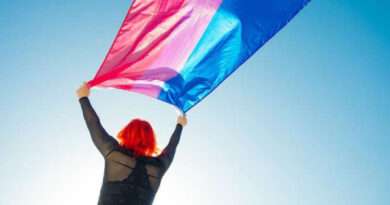Breaking Barriers: The Need for LGBTQ+ Inclusion in India’s School Curriculum for a Gender-Equal Future
India is working towards gender inclusivity and equality, specifically in school education, as currently, school curriculums do not include information about the queer community. The norm of heterosexuality is commonly promoted. Hence, there is a need to include the experiences of LGBTQ+ people. The fight for gender inclusion in curricula is not limited to the pursuit of justice; it is a fundamental component in developing societies prioritising equality and justice for everyone. Education is at the forefront of this social evolution because of its unmatched ability to mold minds and attitudes. The teachings that are taught in India’s complicated educational facilities go well beyond the classroom; these are the places where fundamental ideas about gender roles and equality are either upheld or denied.
Education may be a transforming tool for gender equality, according to educators and social reformers nationwide. Schools have the power to be change agents by introducing children to a variety of viewpoints and questioning conventional gender norms. This will influence how upcoming generations view and interact with the world. Education has a tremendously transformational capacity to promote gender equality. Schools have the power to be change agents by introducing children to a variety of viewpoints and questioning conventional gender norms. This will influence how upcoming generations view and interact with the world. The curriculum is at the centre of this change because it is a powerful instrument that, when used properly, can thoroughly instill gender equality in the brains of young people.
Any educational institution’s curriculum can mold students’ perspectives, beliefs, and future behaviours. It serves as evidence of the ideals a community upholds and seeks to instill in the next generation. Traditional gender stereotypes can be questioned in the curriculum, which can inspire students to consider their prejudices and the systems of society that support them. Teachers who want to encourage gender inclusion in their curricula through their instruction should start by incorporating stories of people of LGBTQ+ accomplishments in a variety of fields and promoting conversations about gender equality. This method promotes inclusivity in the classroom while enabling teachers to act as catalysts for change within their spheres of influence. Cultural and societal boundaries can pose serious problems.
Traditional gender roles are firmly ingrained in the mentality of the community in many regions of India, impacting not just the subject matter taught in schools but also the way it is taught. The cycle of gender bias and inequality can be sustained by these cultural norms, which may subtly hinder the inclusion of gender equality in curricula. A concentrated effort will be needed to involve communities, highlight the advantages of gender-inclusive education, and show how it improves social well-being to remove these obstacles. In this setting, addressing myths vs realities regarding gender equality education becomes imperative. It is essential to refute popular beliefs that this kind of instruction could violate cultural values or cause needless conflict with accurate data and evidence of support.
The primary focus ought to be on emphasizing how gender inclusion benefits everyone involved by fostering a society that is safer and more equitable. Each stakeholder can take specific, actionable steps to contribute towards gender equality. Educators should integrate gender-sensitive resources in the classroom and foster inclusive discussions. Policymakers should advocate for mandating gender equality in the curriculum and provide training to teachers to include gender equality in teaching practices effectively. Parents should promote gender equality at home by modeling gender-equal behaviour. They should provide access to children with diverse resources. Students should be open-minded and actively participate in classroom discussions of gender equality. They should practice gender equality in everyday life and create a non-discriminatory and inclusive environment among themselves. With this dedication to change, the next generation will be better equipped to create a more equal society where gender does not dictate opportunity or respect.
Sources



